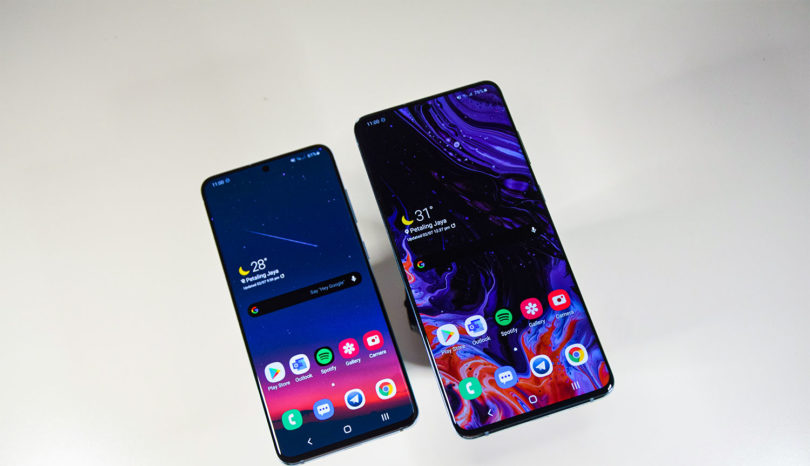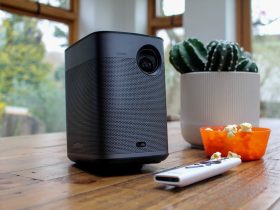
Samsung Galaxy S20 Review: A Powerful Flagship Phone
The Samsung Galaxy S20 is small, which is weird for a 6.2-inch phone, but it’s also true. I mean, compared to the 6.7-inch screen on the Galaxy S20 Plus and the gigantic 6.9-inch Galaxy S20 Ultra, the Galaxy S20 is downright cute. But for people who like smartphones that are easier to use with one hand, the Galaxy S20 might be the best phone to get.
Like its more prominent and more expensive siblings, the Galaxy S20 ($ 999) gives you a smooth 120Hz display, a powerful new camera system that takes multiple photos and videos at once, and 5G connectivity.
If you want a more powerful 10x lossless zoom and a larger screen, check out our Samsung Galaxy S20 Ultra review. And if you want a screen between the S20 and the S20 Ultra, see our Samsung Galaxy S20 Plus review. Just keep in mind that the Plus and Ultra are more expensive at $ 1,199 and $ 1,399.
We’ll bring you our full test results soon, but check out our Samsung Galaxy S20 hands-on review below and lots of impressions to help you determine if this phone is right for you.
Samsung Galaxy S20 review: price and release date
The Samsung Galaxy S20 hits stores on March 6, but you can now pre-order the phone. The Galaxy S20 costs $ 999 and comes with 12GB of RAM and 128GB of standard storage. You can’t go for a model with more RAM or storage, but you can add up to 1TB of storage via the phone’s microSD card slot.
The Galaxy S20 is available through Samsung and three of the four big wireless carriers in the United States, including AT&T, Sprint, and T-Mobile. Verizon will offer a Galaxy S20 in Q2 that is compatible with its mmWave 5G network.
Some retailers and operators offer gifts like gift cards and extra credit for a new S20 when you trade in your current smartphone. Anyone interested in acquiring one of Samsung’s latest flagships for the lowest possible cost should take a look at the best Galaxy S20 deals out there before pulling the trigger.
Samsung Galaxy S20 design
The Samsung Galaxy S20 doesn’t look radically different from the Galaxy S10, but there are some welcome refinements. The cutout for the front camera is smaller this time, and it sits in the top center of the screen rather than the right side, making it less of a distraction. Plus, the screen is less curved, which I appreciate because there’s less chance of accidental touches when you’re just changing the phone in your hands.
I feel like it’s not a big deal at this stage, but, notably, the Samsung Galaxy S20 doesn’t include a headphone jack. This is the first Galaxy S flagship phone to lack this feature.
The Samsung Galaxy S20’s colour options aren’t exciting, at least for now. There is Cosmic Black, Cosmic Gray, Baby Blue, and Baby Pink. I’m a fan of the lighter Baby Blue, just because it looks and feels new. I would have liked to see something more captivating, like the Aura Glow finish that we saw on the Samsung Galaxy Note 10.
Samsung has lagged behind the iPhone 11 and Pixel 4 in camera quality. Still, the Galaxy S20 seems to beat the competition with bigger sensors, a larger zoom, and new features that make shooting and sharing easier. The Samsung Galaxy S20 has a triple rear camera that starts with a 12 MP wide sensor of 1.8 microns. The telephoto lens uses a 64MP sensor with 0.8 microns, and the 12MP ultra-wide camera uses a 1.4-micron sensor.
Why am I reciting all these numbers? Well, the bigger the sensor, the more light it lets in, which should result in brighter and sharper images. In comparison, the Galaxy S10’s wide-angle, telephoto, and ultra-wide cameras were 1.4, 1, and 1 micron, respectively. So at least two of the lenses are significantly larger.
The Samsung Galaxy S20 doesn’t have the 100x Space Zoom monster of the Galaxy S20 Ultra, but it does have a more powerful zoom than the Galaxy S10. Hybrid optical zoom goes up to 3x, which is supposed to be lossless, and digital zoom goes up to 30x. As you get closer to 30x, the camera view becomes shaky, but overall this is an improvement on 2x zoom on the Galaxy S10.
Spatial zoom on the Galaxy S20 Ultra
My favourite feature of the Samsung Galaxy S20 camera is Single Take. When you press the shutter button in this mode, the phone takes a series of photos while recording 10 seconds of video. The phone then gives you a gallery of results, including an AI Best moment, and an ultra-wide shot, a Live Focus image (portrait mode), as well as a fast-forward video that is great for original and social video.
Single-shot on the Galaxy S20
The Galaxy S20 is a beast on the video front, as it can record 8K video at up to 24 frames per second. You will also stream videos to Samsung 8K QLED TVs if you can afford one and take 33MP photos of 8K videos you want to share.
The front camera of the Samsung Galaxy S20 uses a 10MP sensor that has 1.22 microns and an aperture at f / 2.2. That’s the exact resolution and size as the S10’s front camera, but that camera had an aperture of f / 1.9. Typically a lower number is better because more light passes through the lens, but we will see how the front camera performs in our tests.
Samsung Galaxy S20 screen
While a fast processor helps, the screen refresh rate can make a phone feel smoother in everyday operation, whether you’re scrolling web pages or playing games. The 6.2-inch OLED screen on the Samsung Galaxy S20 has a 120Hz refresh rate, which is twice the 60Hz frequency on the Galaxy S10 and higher than the 90Hz screen on the OnePlus 7T.
Another advantage? The Samsung Galaxy S20 has a new 240Hz touch sensor that is supposed to be more sensitive. Using the phone during our hands-on time, the Galaxy S20 felt quite fluid, and you can easily toggle between 60Hz and 120Hz in the on-screen settings menu. The bad news is that the 120Hz selection drops the resolution from quad HD to full HD.
Samsung Galaxy S20 performance
As the first phone with Qualcomm’s Snapdragon 865 processor, the Samsung Galaxy S20 should provide a lot of speed, especially since it is paired with a robust 12GB RAM. Samsung is also giving you control over how you use this memory, as you can allocate up to three apps to store directly in RAM. The result should be almost instantaneous load times for resource-intensive applications and games.
The Samsung Galaxy S20 comes with 128GB of storage, and there is no 512GB model like the Galaxy S20 Plus and Galaxy S20 Ultra. Fortunately, you can add up to 1TB of storage via the microSD card slot.







